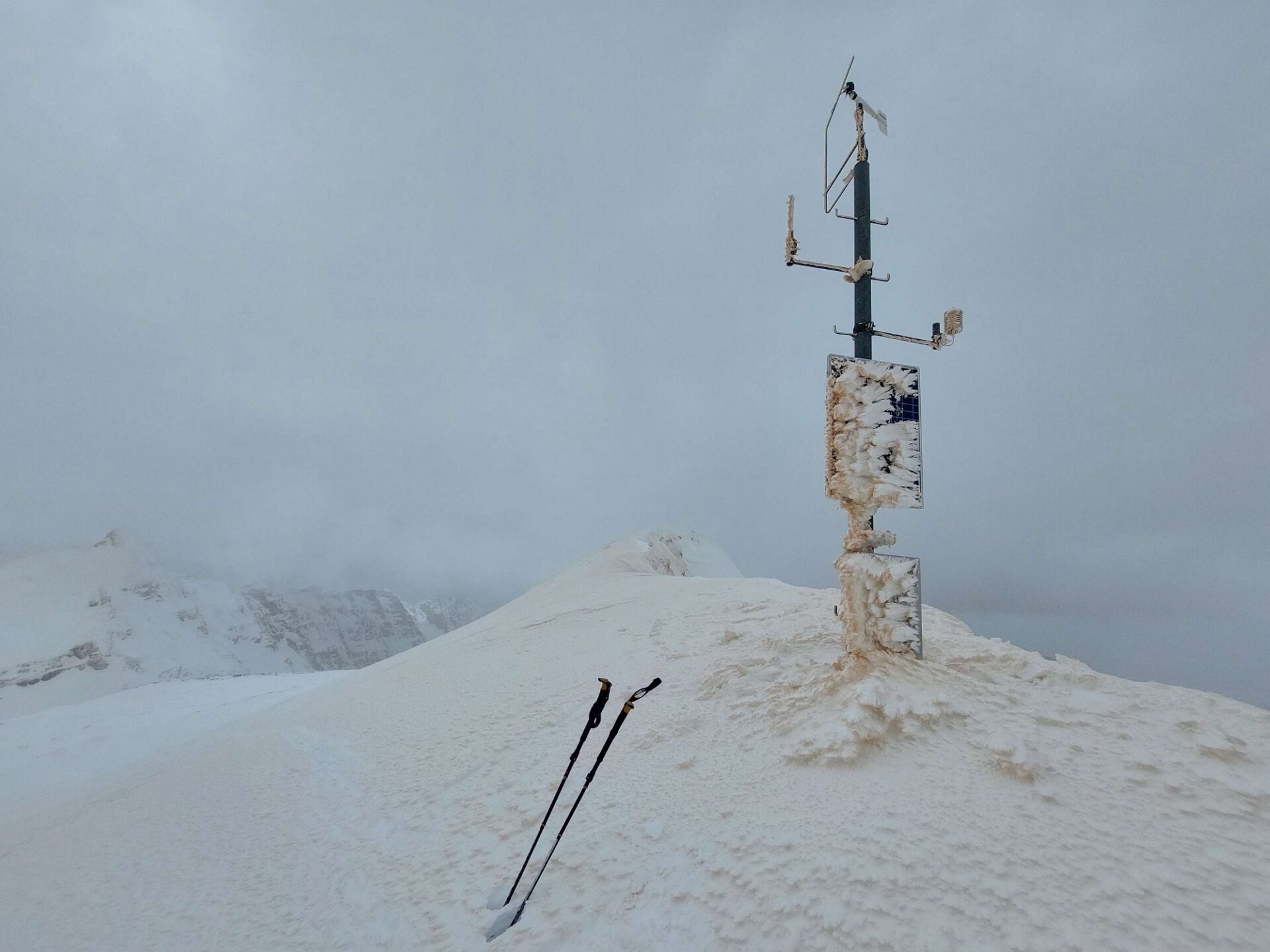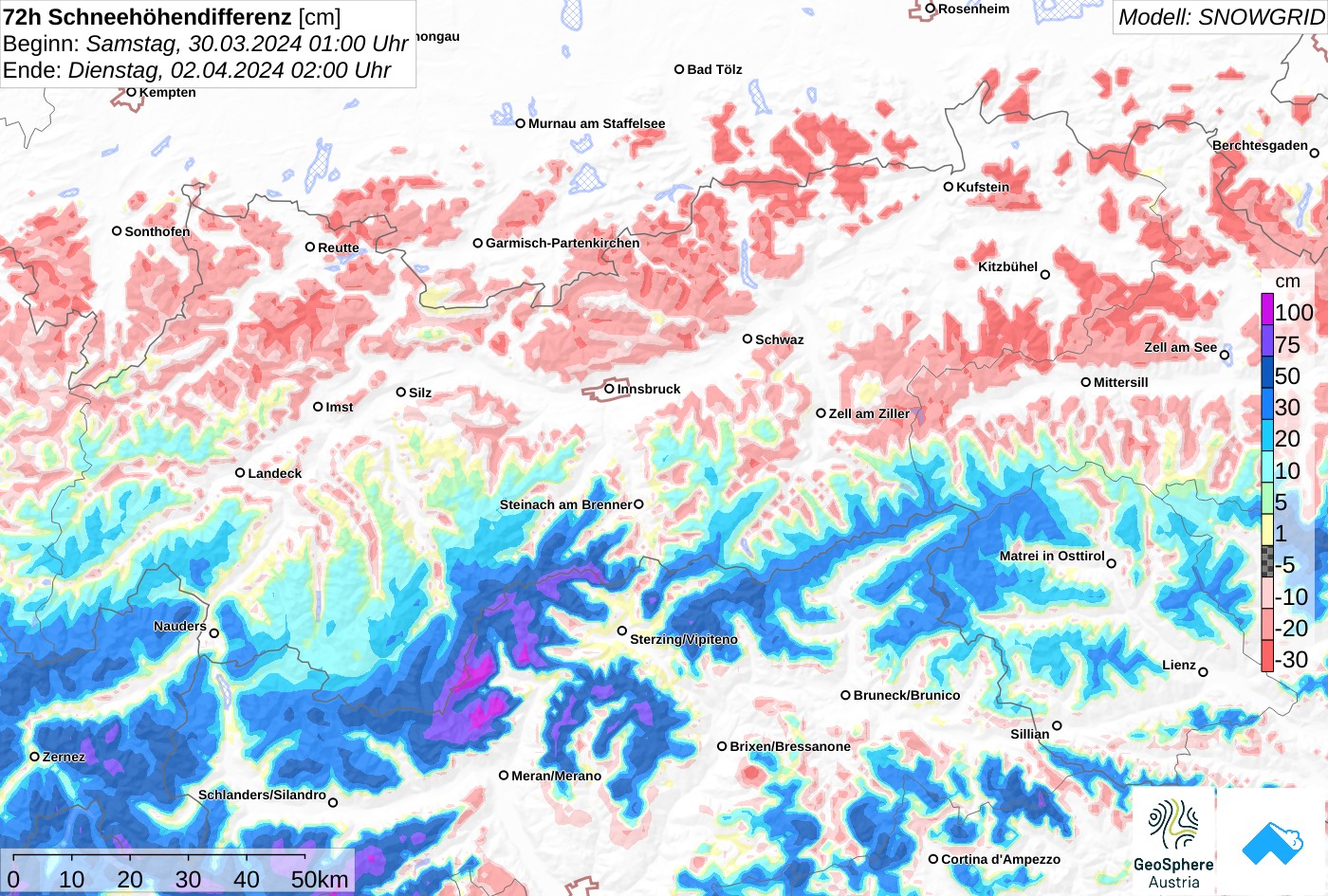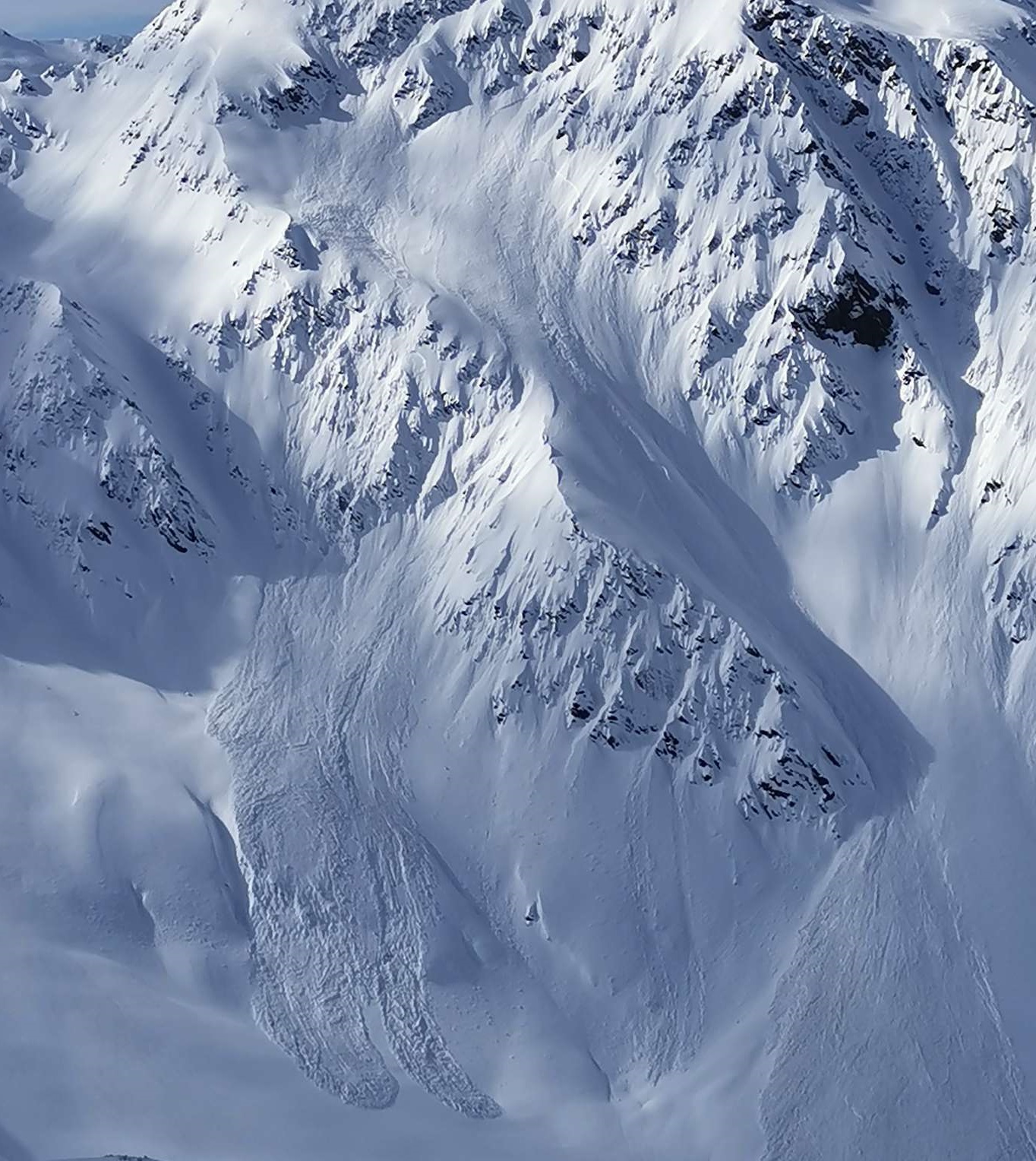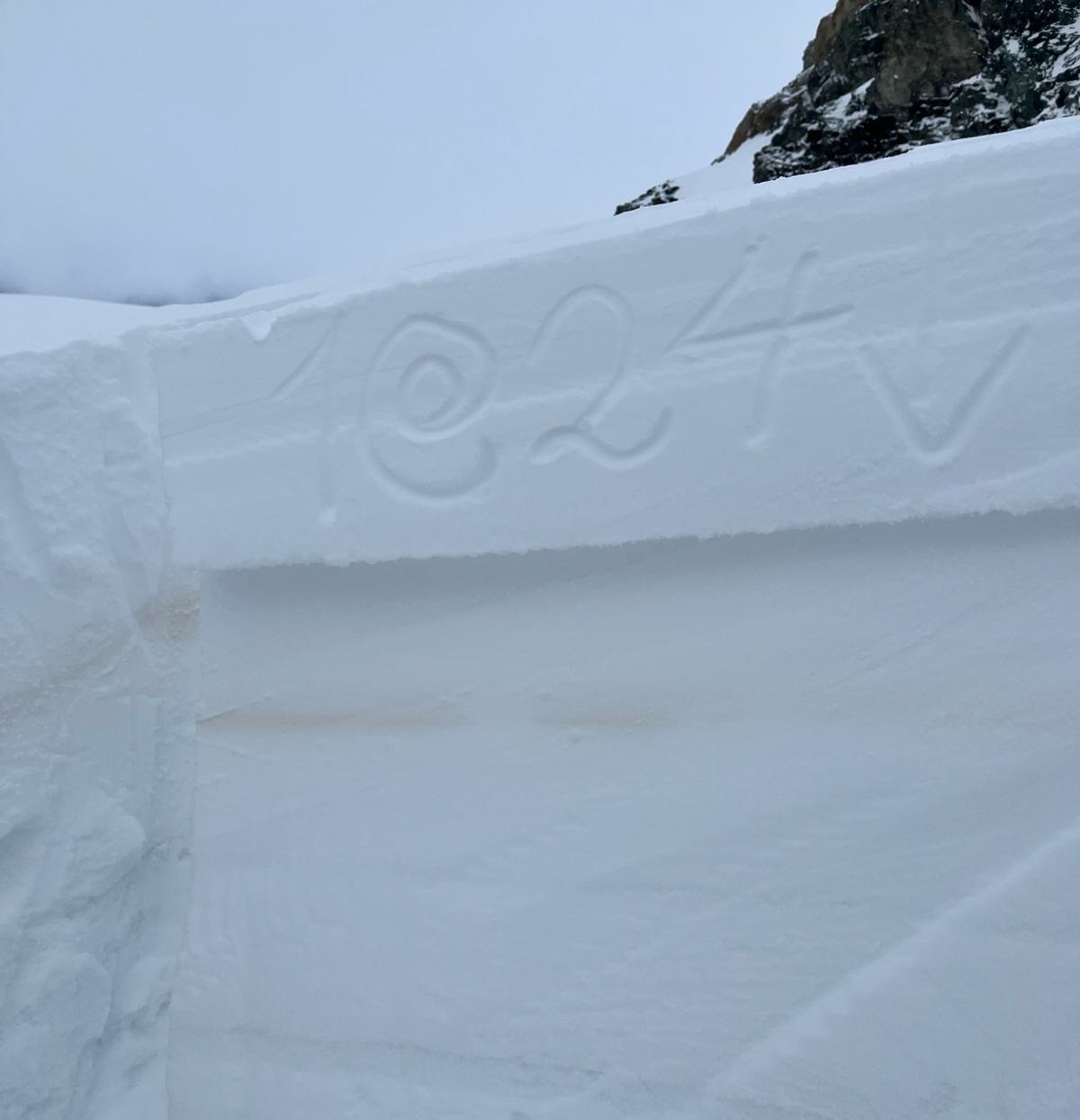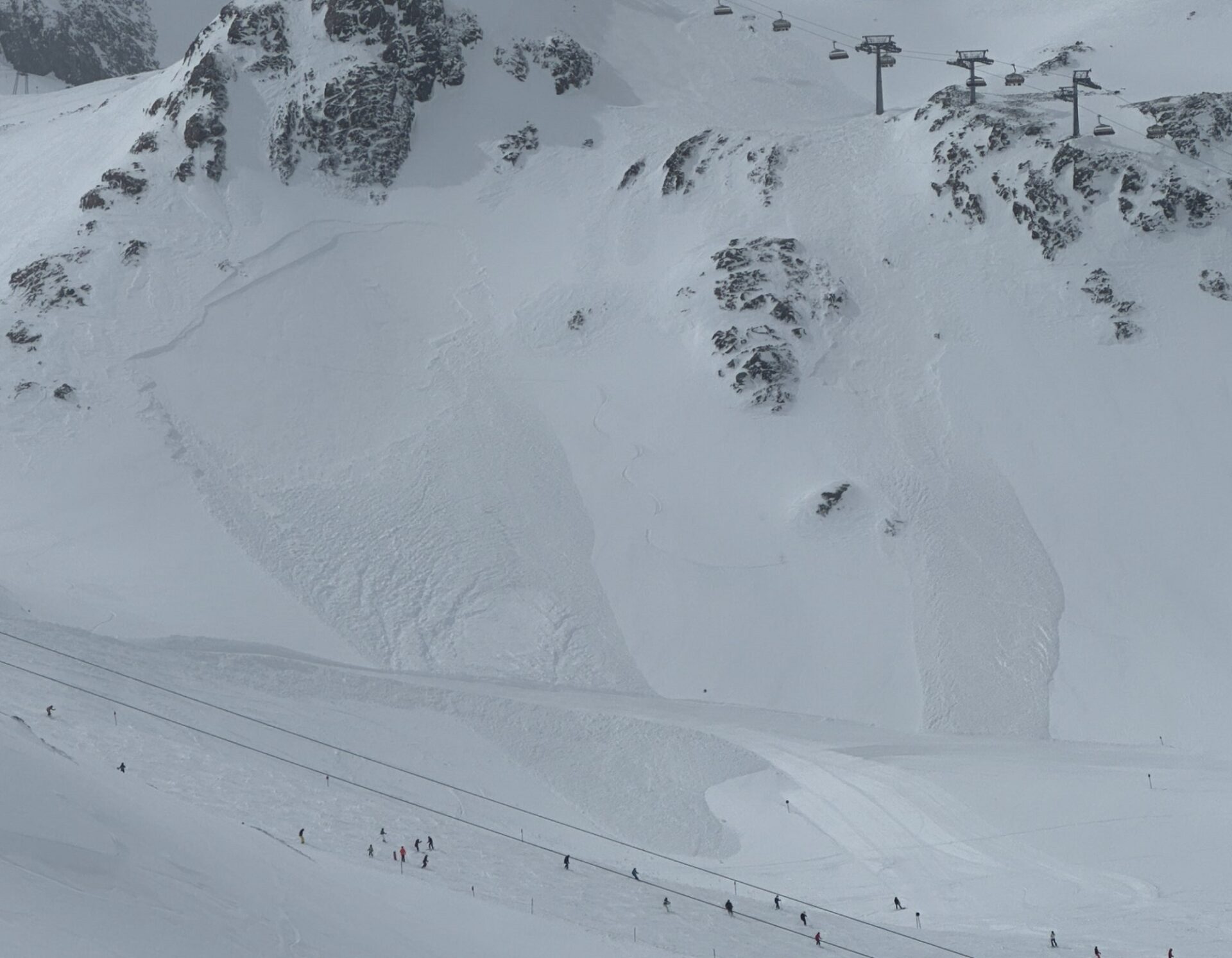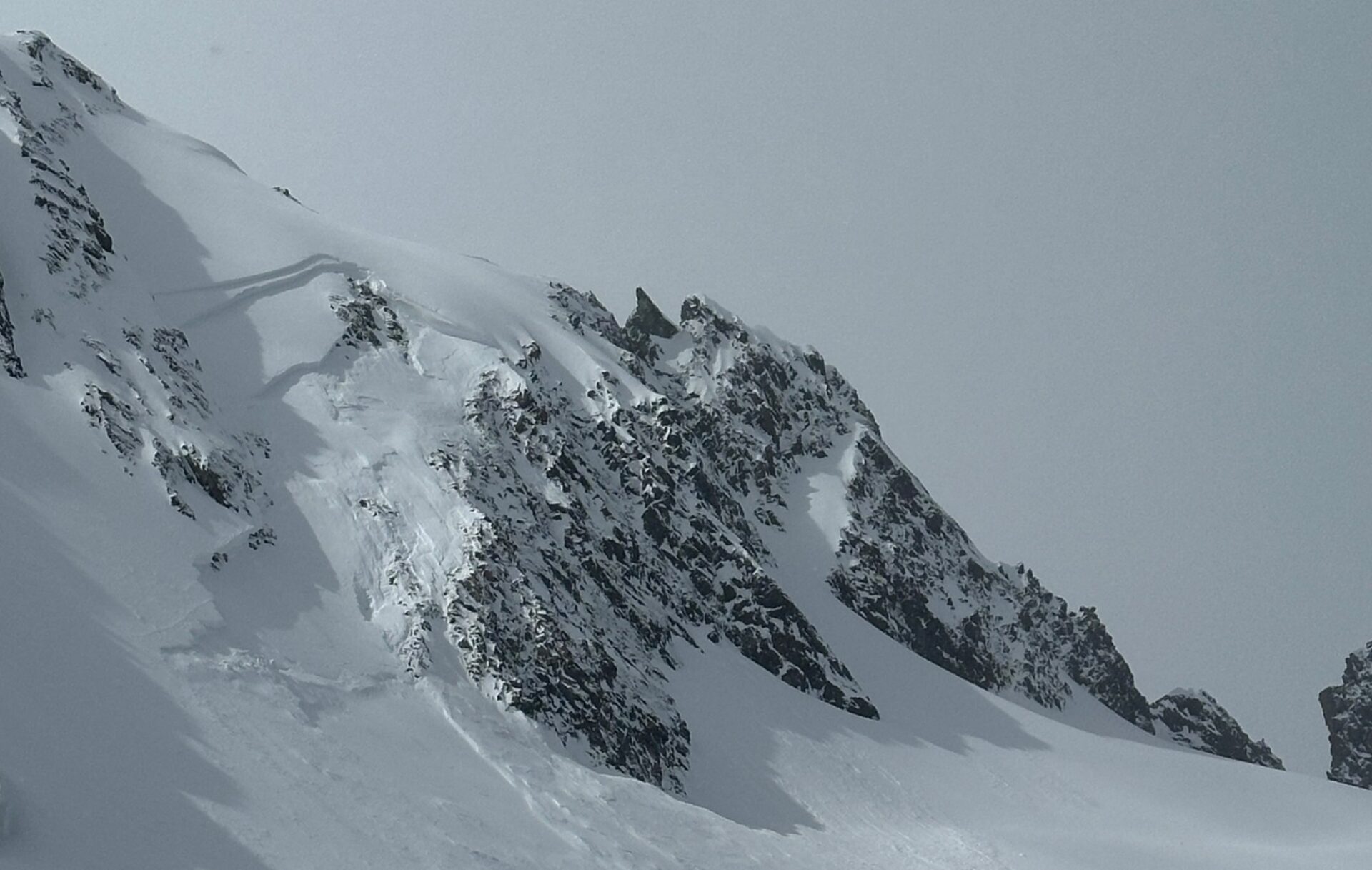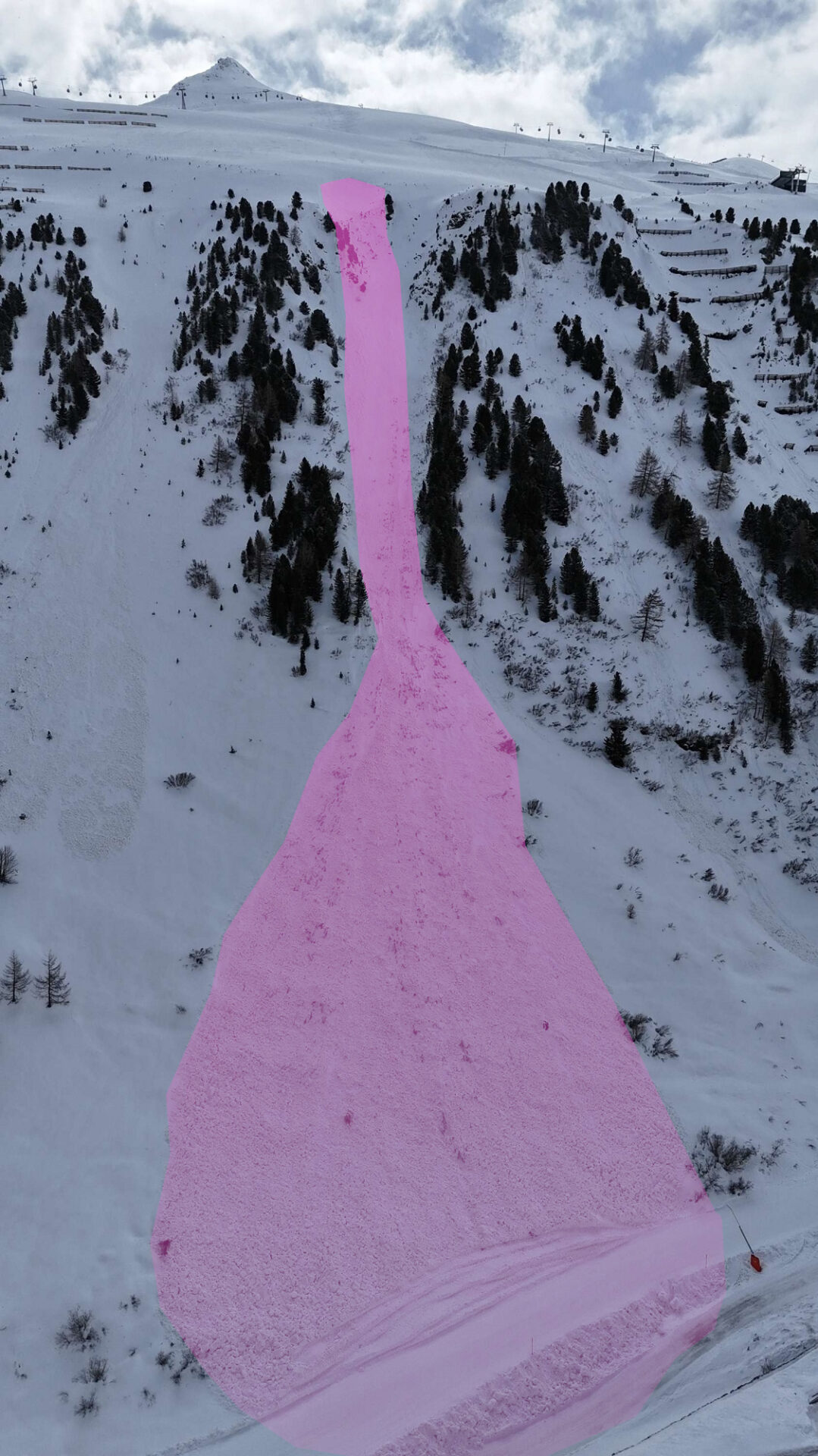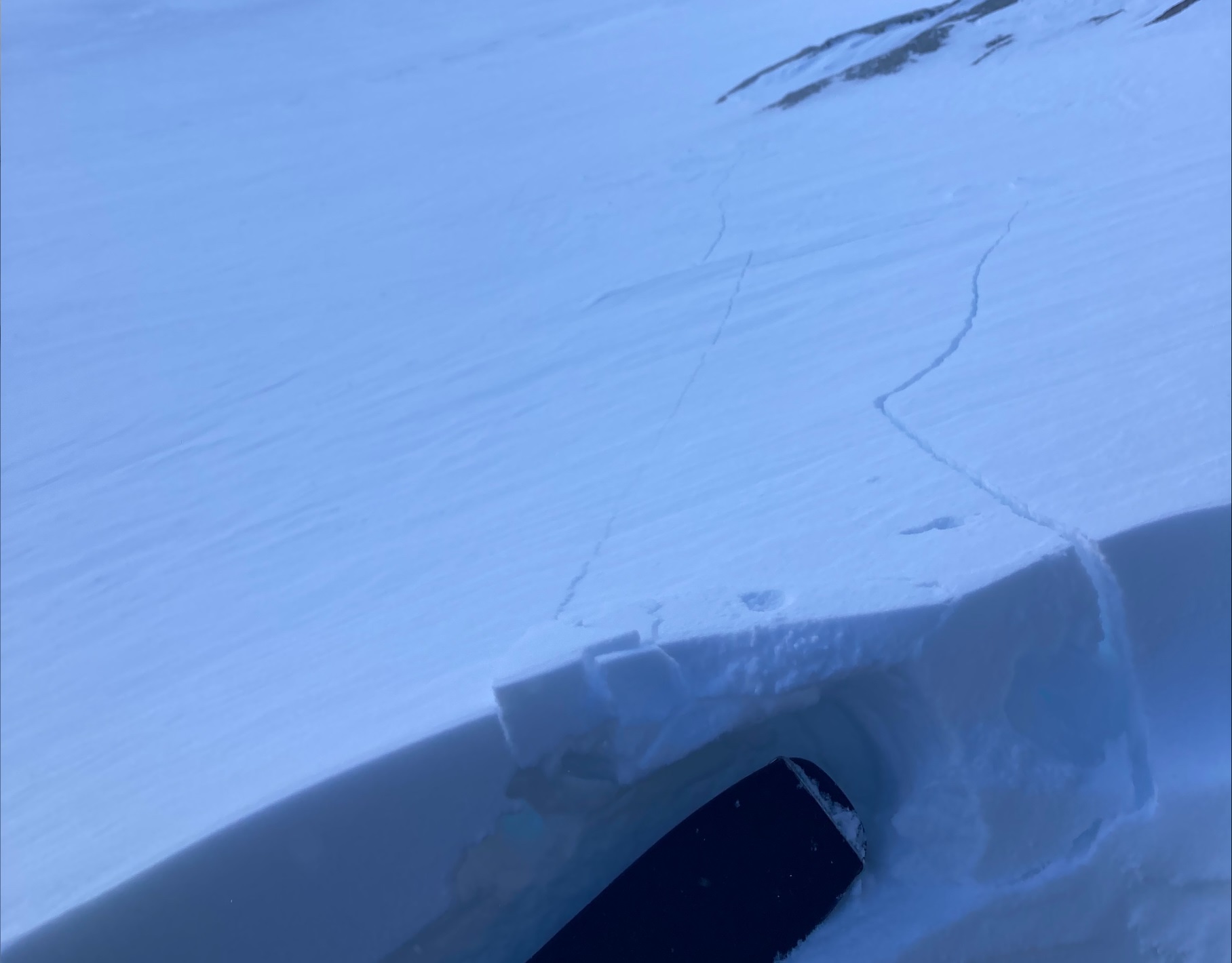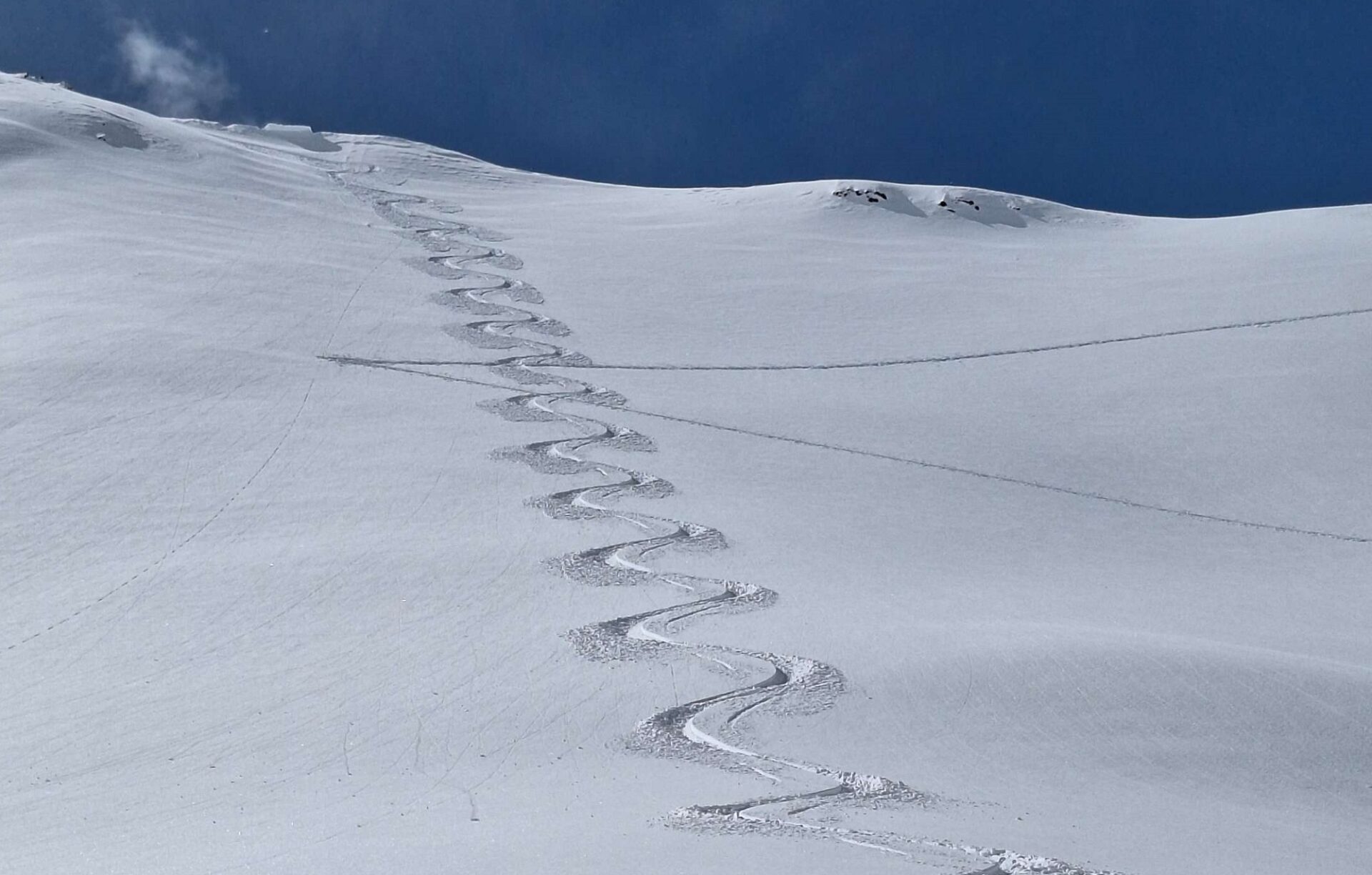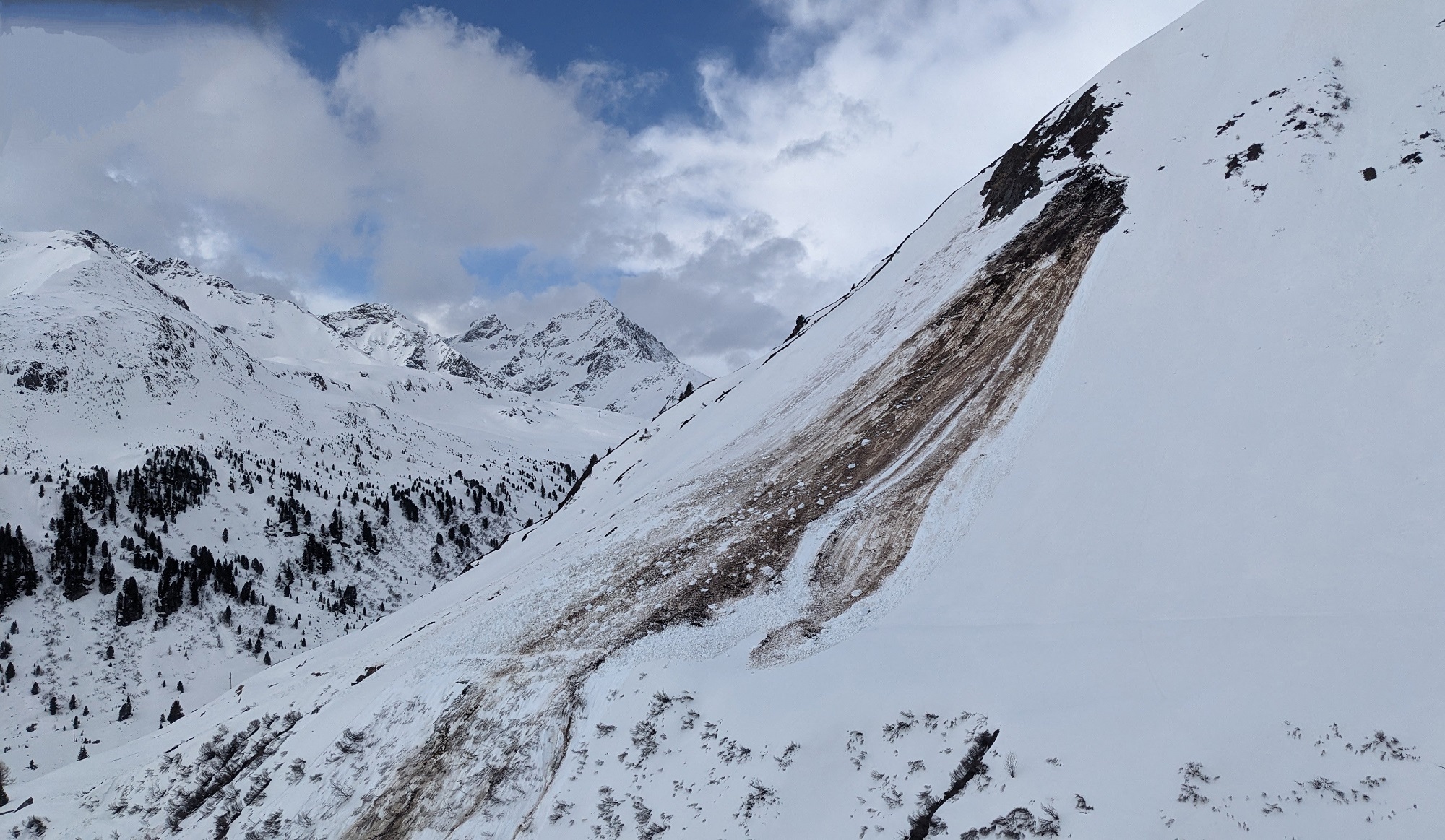Solar radiation and high temperatures are leading to increased water penetration of the snowpack over coming days. We expect, particularly on east and west-facing slopes, but also on south-facing slopes in high alpine regions, a completely wet snowpack for the first time. And with it, a striking increase of avalanche danger. Numerous naturally triggered wet-snow avalanches are anticipated. Simultaneously, gliding snow activity will again increase. Avalanches can grow to large size and plummet in canalized plummet paths down to greenland. This coming weekend it will be necessary to terminate backcountry tours and ascents to huts during the morning hours.
Outlook for this weekend
Extremely mild air masses, Sahara dust
Over the next few days, a southwesterly airstream will bring dry and (for this juncture of the season) extraordinarily warm air masses our way. The zero-degree level will climb to above 4000m by Sunday, 07.04. That means that even at 3000m the thermometer could climb to 10 degrees. In the Inn Valley we might reach summertime values of 30 degrees. And once again, dust from the Sahara Desert will be blown our way and make the atmosphere hazy.
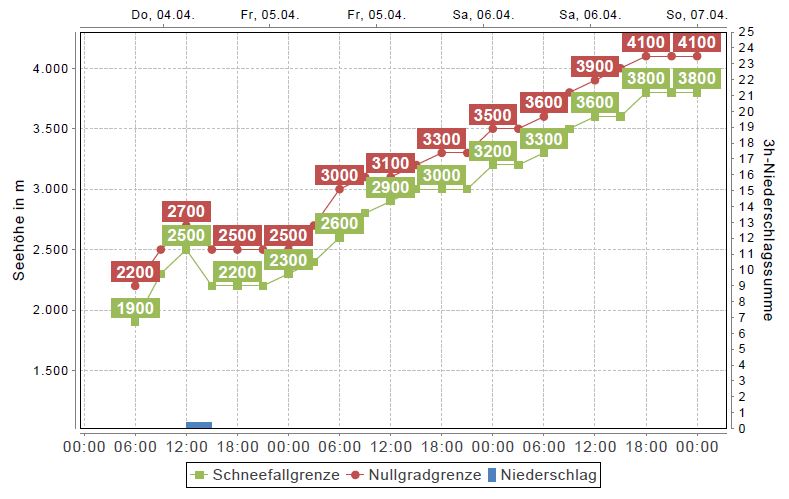
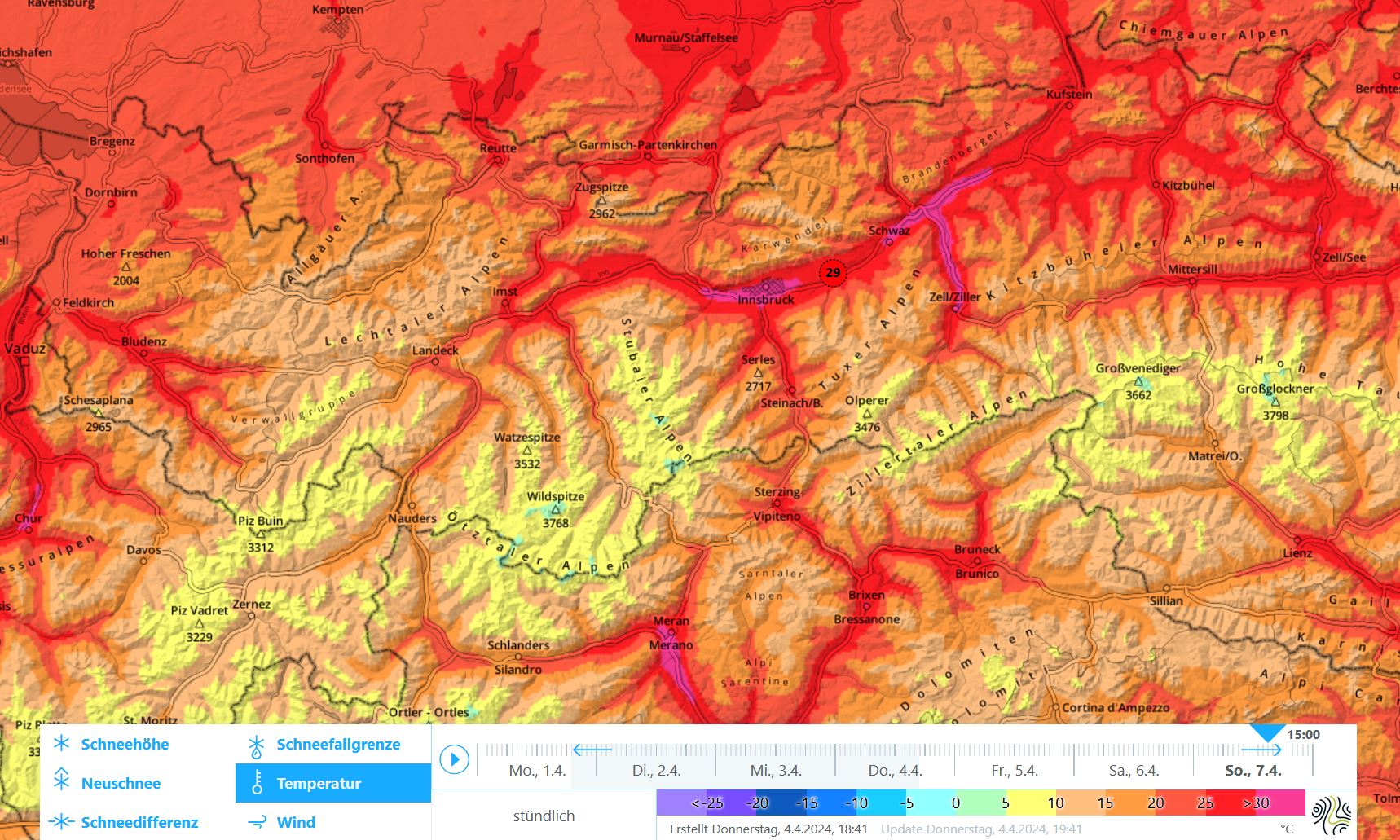
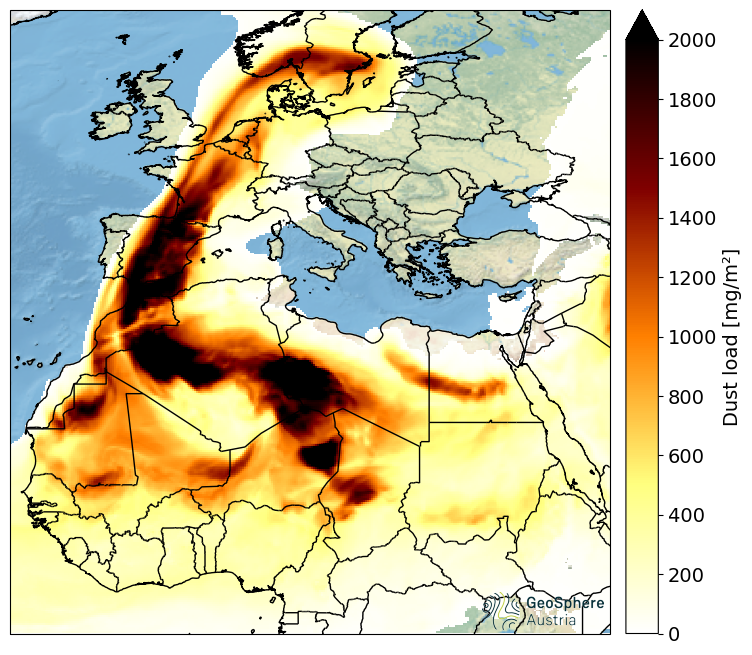
Moisture deeply penetrating the snowpack
The snowpack has been quite wintery until now. Moisture reaching down to the ground has only been evident on south-facing slopes below 2800m, and in general below 2200-2400m. This will change radically in the next few days: weather like in early summer and strong solar radiation will make the snowpack wetter than ever.
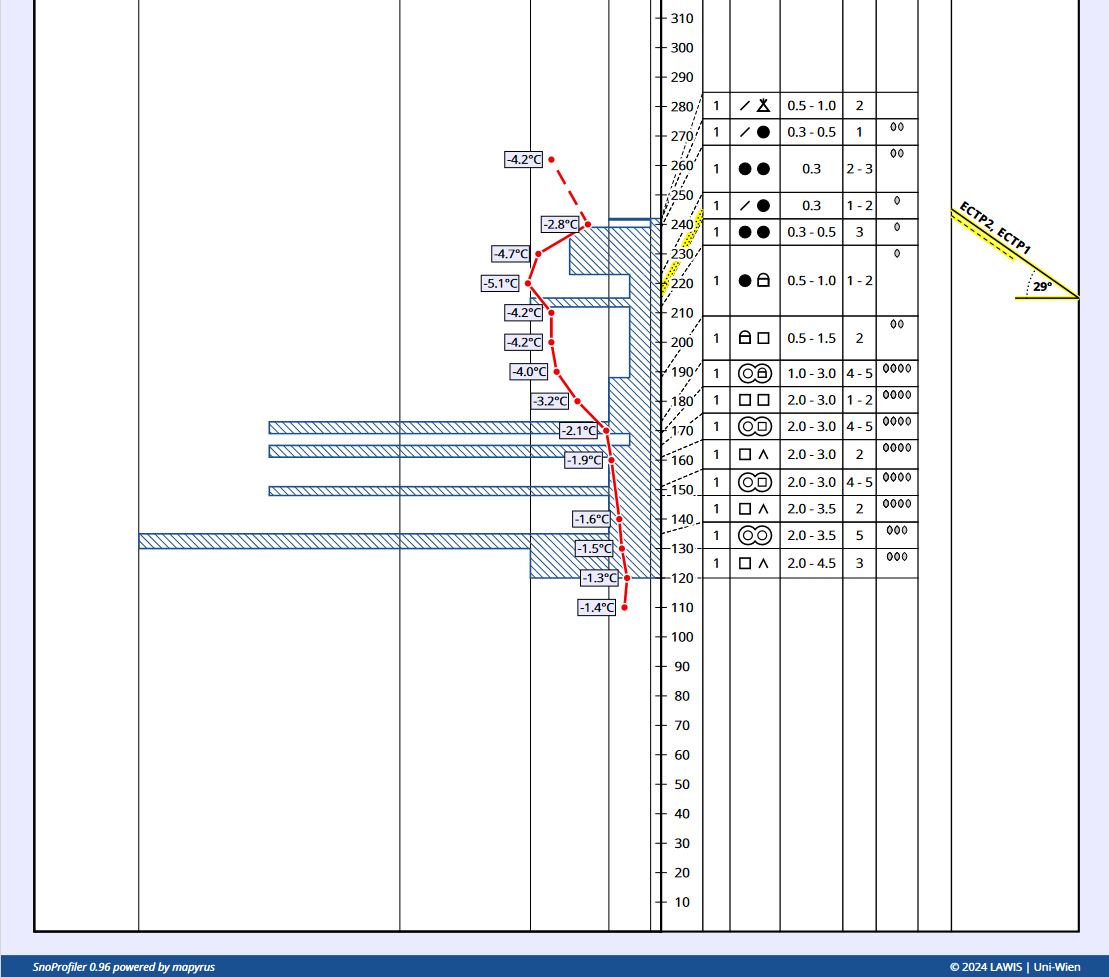
We expect the snowpack to become thoroughly wet down to the ground for the first time on west and east-facing slopes up to 2800m and up to high-alpine altitudes on south-facing slopes. Also on shady slopes, a moistening of the uppermost part of the snowpack up to 2400m will play a part, but a completely wet snowpack down to the ground is only to be expected where there is little snow.

Snowpack model until Monday 8.4 for a 38° steepness gradient west-facing slope at Sonnbergalm weather station (2529m) in the Gurgler range. The bright red zone characterizes melting forms which are generated by water penetrating the snowpack. Red-black dashes depict melt-freeze crusts which are generated on the surface by re-freezing of melting forms during nights of clear skies.
Through the melting processes the firmness of the snowpack deteriorates. Increasingly frequent wet loose-snow avalanches can be expected. As a result of water penetrating deeper into the snowpack, the likelihood of wet slab avalanches also increases somewhat from day to day. This is because rough-crystal soft layers in the lowermost part of the snowpack are weakened by the penetrating water. The good news is that the snowpack layering thereby becomes highly stable. Wet slab avalanches will thus occur only in isolated cases. Least favorable will be central and southern East Tirol and the southern Ötztal Alps, where a somewhat delayed winter launch created a less favorable structuring of the snowpack base.
At the same time, the moisture in the snowpack will also stimulate gliding snow activity. At this point in the season the gliding process is dominated by water inside the snowpack more than anything else. Thus, glide-snow avalanches will correspond increasingly to the daytime cycle of avalanche danger.
Wet-snow and glide-snow avalanches can sweep along the entire “rotten” snowpack along their plummet paths. For that reason, even large-sized avalanches are possible, reaching down to zones where there is no snow on the ground along canalized plummet paths such as gullies and trenches.
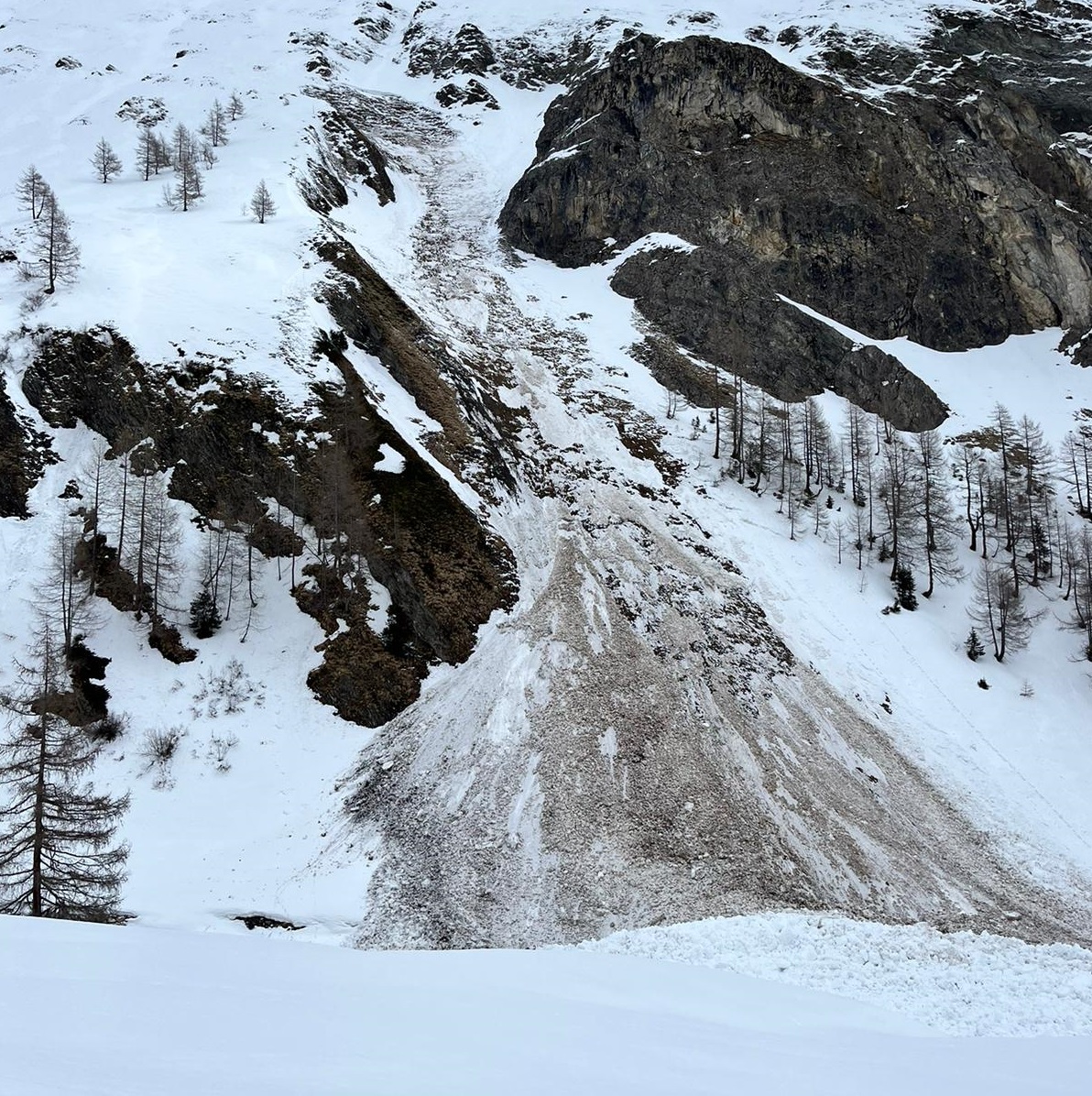
The earlier you launch, the higher you go, the better it is
A high-pressure front will bring sunny weather as of Friday, 5.4, and nights of clear skies. Thereby, the snowpack, in spite of warm temperatures, can cool off at night and form a melt-freeze crust on the surface. This nocturnal longwave outgoing radiation will create a favorable avalanche situation in early morning, before the solar radiation swiftly softens the melt-freeze crust and avalanche danger rapidly rises during the morning hours.
For winter sports enthusiasts, the rule of thumb this weekend is: The earlier you start and the higher you venture, the better off you are. Backcountry tours and also (endangered) ascents to huts should be brought to an end early in the day. The softening snowpack (rotten snow) and first naturally triggered (loose-snow) activity are indicators of rising danger.
Starting Wednesday, temperatures will drop
The early-summer weather, seen from today’s perspective, will persist at least into the beginning of next week before an intensifying southerly foehn wind arrives on Tuesday, 09.04, and temperatures drop, accompanied by minor precipitation. At that point, the danger of wet-snow avalanches will recede.
Review: another mercurial week
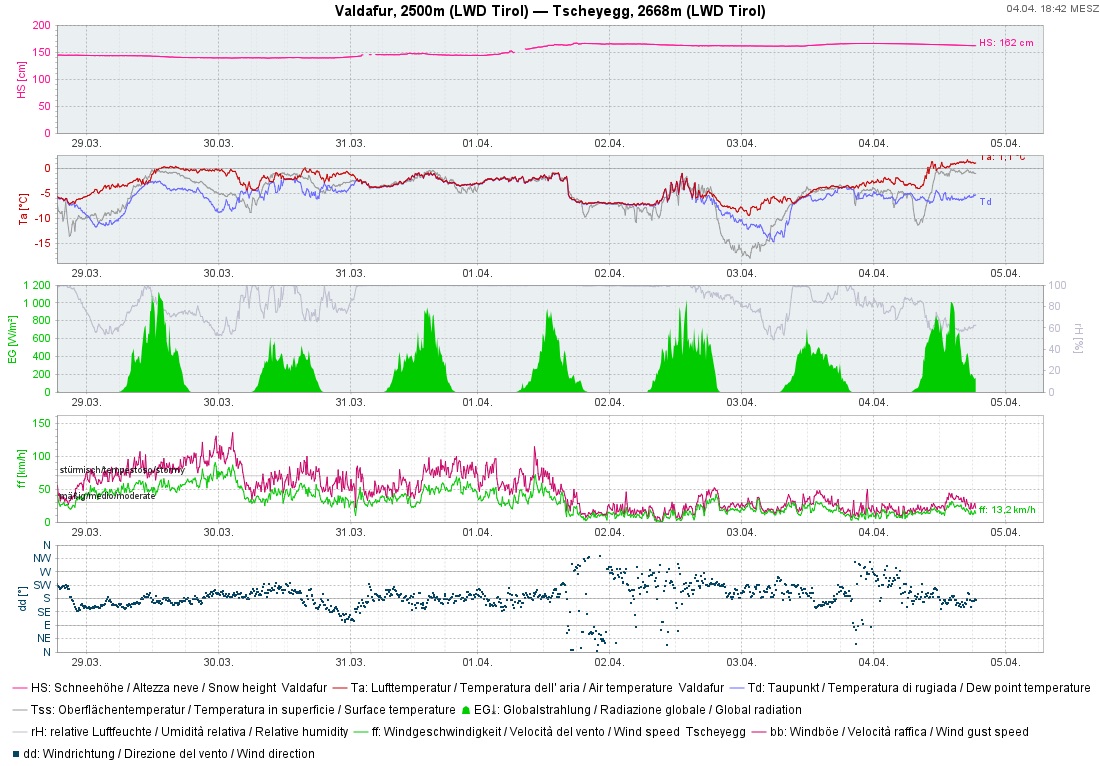
Last week at Valdafur weather station in the Glockturm range: particularly striking was the storm-strength southerly foehn wind which persisted for several days. On Easter Monday, 01.04, the foehn collapsed and precipitation followed, heavy in some places, along with lower temperatures.
